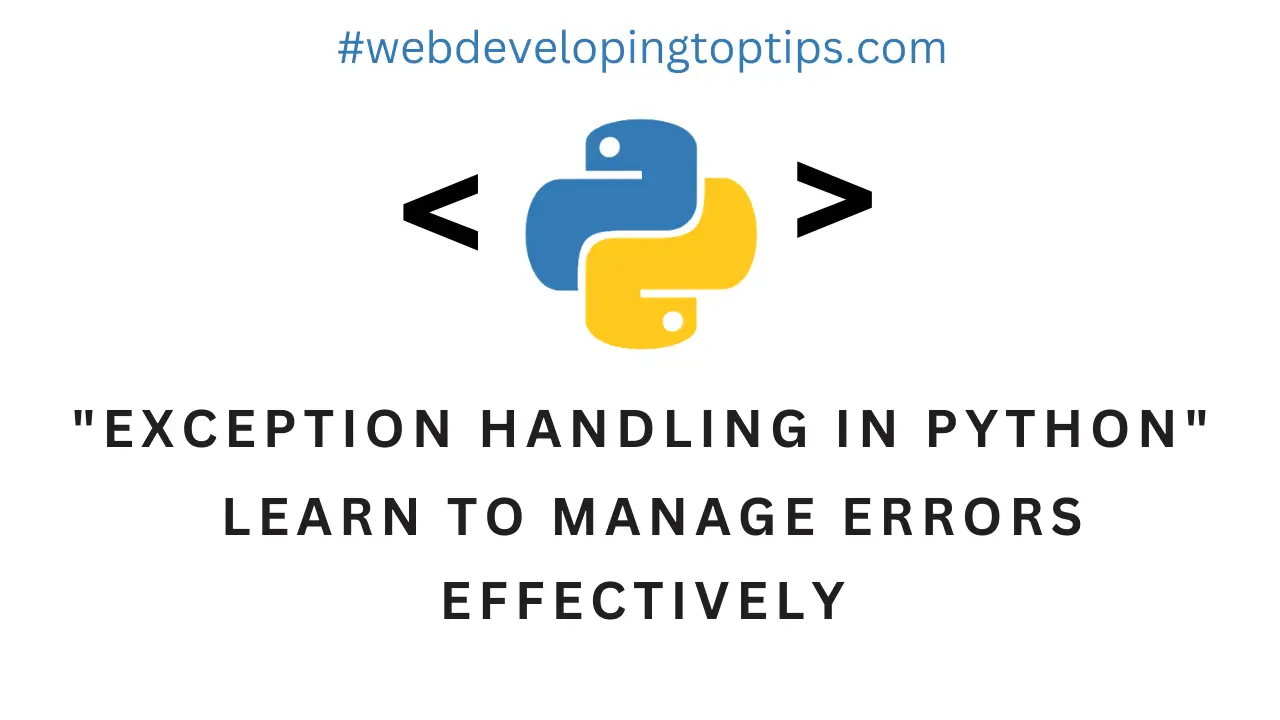“Python Exception Handling Examples: Learn to Manage Errors Effectively”
Python provides a wide range of built-in exceptions that cover various error scenarios that can occur during program execution. Here are some examples of common Python exceptions along with explanations of their typical causes:
1. SyntaxError:
This exception is raised when there is a syntax error in your code.
```python
# Example
print("Hello, World!"
```
In this case, the missing closing parenthesis will result in a `SyntaxError`.
2. NameError:
This exception occurs when a local or global name is not found.
```python
# Example
print(unknown_variable)
```
The variable `unknown_variable` is not defined, leading to a `NameError`.
3. TypeError:
This exception is raised when an operation or function is applied to an object of inappropriate type.
```python
# Example
result = "5" + 3
```
The concatenation of a string and an integer causes a `TypeError`.
4. ValueError:
This exception is raised when a function receives an argument of the correct data type but an inappropriate value.
```python
# Example
number = int("hello")
```
Trying to convert a non-numeric string to an integer results in a `ValueError`.
5. ZeroDivisionError:
Raised when division or modulo operation is performed with a divisor of zero.
```python
# Example
result = 5 / 0
```
Division by zero triggers a `ZeroDivisionError`.
6. IndexError:
Raised when an index is out of range.
```python
# Example
my_list = [1, 2, 3]
print(my_list[4])
```
Trying to access an index that doesn’t exist in the list results in an `IndexError`.
7. FileNotFoundError:
Raised when a file cannot be found.
```python
# Example
with open("nonexistent_file.txt", "r") as file:
content = file.read()
```
Trying to open a file that doesn’t exist triggers a `FileNotFoundError`.
8. KeyError:
Raised when a dictionary key is not found.
```python
# Example
my_dict = {"name": "Alice", "age": 25}
print(my_dict["city"])
```
Accessing a non-existent key in a dictionary raises a `KeyError`.
9. AttributeError:
Raised when an attribute reference or assignment fails.
```python
# Example
my_list = [1, 2, 3]
my_list.append(4)
length = my_list.length
```
Trying to access a non-existent attribute triggers an `AttributeError`.
10. ImportError:
Raised when an imported module cannot be found or loaded.
```python
# Example
import non_existent_module
```
Attempting to import a module that doesn’t exist results in an `ImportError`.
These are just a few examples of Python exceptions. Understanding these exceptions and their causes is crucial for effective error handling in your Python programs. By identifying and addressing these exceptions appropriately, you can write more robust and reliable code.

